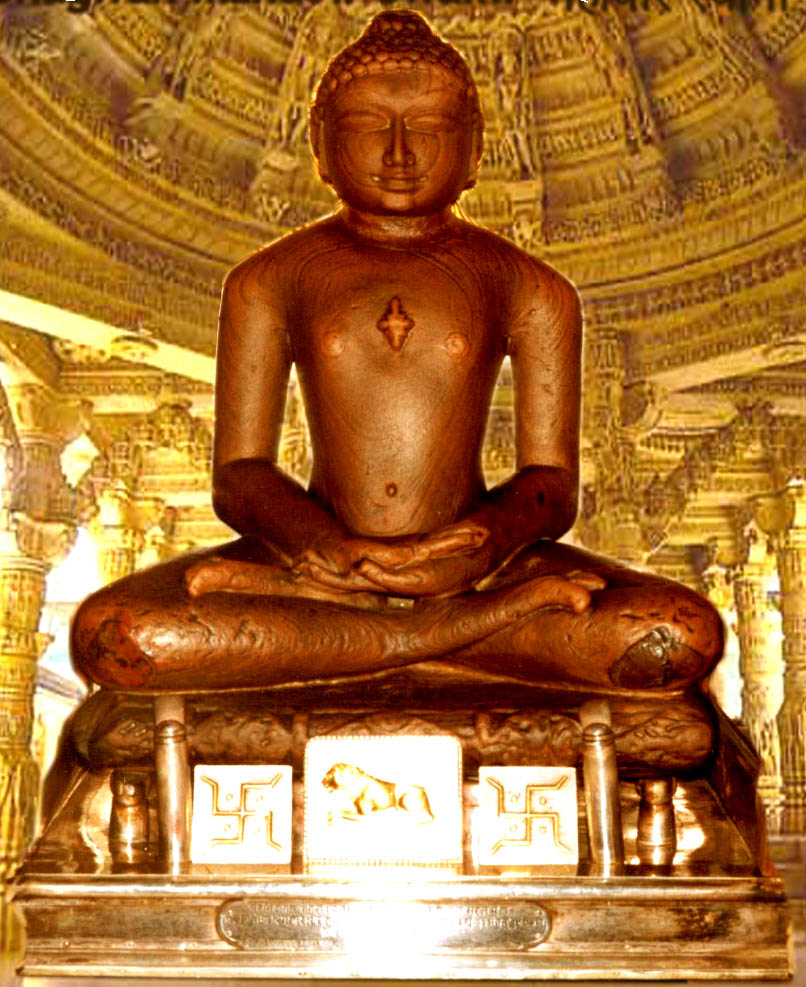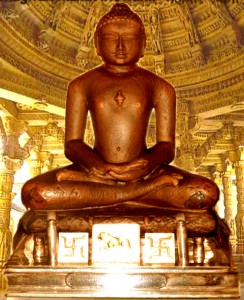 Mahavir Jayanti is the most propitious day for the followers of Jainism and principally the Digambars. Jayanti means Birth anniversary. Mahavir Jayanti is one of the biggest festivals of the Jain community who celebrate the birth anniversary of Lord Mahavir, the 24th Teerthankar of the Jains.
Mahavir Jayanti is the most propitious day for the followers of Jainism and principally the Digambars. Jayanti means Birth anniversary. Mahavir Jayanti is one of the biggest festivals of the Jain community who celebrate the birth anniversary of Lord Mahavir, the 24th Teerthankar of the Jains.
History
Lord Mahavir is the founder of modern Jain religion and was born on the 13th day of the rising moon of the Chaitra month in 599 B.C or 615 B.C. He was the last of the 24 Teerthankars which mean Jain Prophets. The word Jain is derived from the word “Jina” which means Conquerer.
He was the son of Siddhartha, Raja of Kundalpura and Queen Trishala also known as Priyakarni. He was named as Vardhaman meaning “the one who brings prosperity”. He was born at Kshatriyakund, which is near borderPatnain
Bihar. Both his parents were extremely religious and followers of the 23rd Jain Teerthankar – Lord Parshwanath.
The Jain community is divided into two main sects- Digambaras and Swetambaras- both the sects differ in their belief of the year of Lord Mahavir’s birth.
Lord Mahavir was great teacher and his philosophies and teachings for mankind are path to happiness. His teachings are based on non – violence and leads one to spirituality and salvation.
Celebration of Mahavir Jayanti
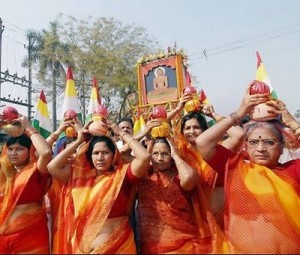 On Mahavir Jayanthi, Jain temples are decorated with flags. In the morning the idol of Mahavira is given a ceremonial bath called the ‘abhishek’. It is then placed in a cradle and carried in a procession around the neighbourhood. The devotees will make offerings of milk, rice, fruit, incense, lamps and water to the people in procession. Some sections of the community even participate in a grand procession. Lectures are held to preach the path of virtue. People meditate and offer prayers. Donations are collected to save the cows from slaughter. Pilgrims from all parts of the country visit the ancient Jain Temples at Girnar and Palitana inGujaraton this day.
On Mahavir Jayanthi, Jain temples are decorated with flags. In the morning the idol of Mahavira is given a ceremonial bath called the ‘abhishek’. It is then placed in a cradle and carried in a procession around the neighbourhood. The devotees will make offerings of milk, rice, fruit, incense, lamps and water to the people in procession. Some sections of the community even participate in a grand procession. Lectures are held to preach the path of virtue. People meditate and offer prayers. Donations are collected to save the cows from slaughter. Pilgrims from all parts of the country visit the ancient Jain Temples at Girnar and Palitana inGujaraton this day.
Mahavir Jayanti is also celebrated during the 8 day holy period of Paryushan. During this period, pre-defined readings are carried out from a holi scripture – Kalpa Sutra that contains biographies of Jain Tirthankars. Biography of Mahavir Swami, particularly His birth, is read on the day of Mahavir Jayanti.
Jain religious leaders spend the day in solitude, while the rest of the Jain population organises peaceful processions, with children depicting stories from the life and times of Saint Mahavir the day is celebrated with a great deal of joy and enthusiasm. Mahavir Jayanti is generally considered auspicious all over the country.
Mahavir Jayanti is largely spent in prayer. In some places, peaceful processions are taken out. Children enact scenes depicting different phases of Mahavir’s life. It is considered an auspicious day to embark on new ventures or for social activities. Jain devotees visit sacred places and worship the Teerthankaras or the religious gurus.
Places to Visit on Mahavir Jayanti
Mahavir Jayanti is especially observed in places like Old Delhi,Gujaratand Rajasthan, which consists of a sizeable Jain population. At certain places, (like the highly revered shrines of Girnar and Palitana in Gujarat, Pawanpuri in Bihar and the Parasnath temple inCalcutta),
Jain Temples in India
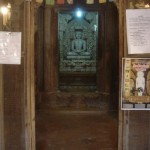 Rikhabdev Temple
Rikhabdev Temple
Better known as Kesariyaji, is situated 40km from Udaipur, Rajesthan. It is dedicated to noble Rikhabdev, the first Jain Tirthankara. Rikhabdev is well known for its Adinath or Rikhabdev Temple
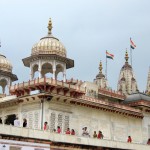 Sri Mahavirji Temple
Sri Mahavirji Temple
The town ofSri Mahavirji is one the most popular Jain pilgrimages inIndia for here is one of the holiest Jain temples in Rajasthan. The Shri Mahavirji temple on the sides of the river Gambhir was built with white marble in honour of Mahavira. It is 110km from Sawai Madhopur
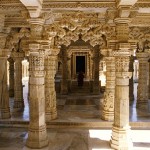 Dilwara Jain Temple
Dilwara Jain Temple
The Jain Dilwara temples ofIndia are located nearly about 2½ kilometers fromMountAbu which is Rajasthan’s only hill station. Its fame is the Jain temples architecture at Dilwara, about 5km fromNakkiLake. The Dilwara temples were built in the period of Jain ascendancy and are one of the finest Jain templesIndia has to offer. Various experts consider them architecturally higher to the Taj Mahal.
Arthuna Stone Temples
Arthuna was once the capital of Paramaras who ruled over the state of Vagad. Paramaras were initially the rulers of the Malwa region in the 11th century. One of the most famous Paramara king was Raja Bhoja, a great patron of Sanskrit. Arthuna as well as its adjoining areas have clusters of ruined Hindu and Jain temples belonging to the 11th, 12th and the 15th centuries. Among the dilapidated ruins is a beautifully carved conjugated statue of Shiva, Parvati and Ganesh. Lankiya village around Arthuna has Shaivite temples called Nilkanth Mahadev Temples.
Gomateshwara Temple
Thetemple ofShravanabelagola is located 51 km south east of Hassan in Karnataka at an Altitude of about 3350 feet above sea level. There are excellent roads fromBangalore andMysore.
Khajuraho Jain Temple
Shri Digamber Atishay Kshetra, Khajuraho is been located at Village Khajuraho, Taluka Rajnagar, District Chatarpur (M. P.). which is 60 km from Mahoba, 152 km from Satna and 13 km fromJhansi.
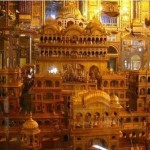 Nasiyan Digambar Jain Temple
Nasiyan Digambar Jain Temple
TheNasiyan Digambar Jain Temple is located inAjmer (Rajasthan) on Prithviraj Marg. It is also popularly known as the ‘RedTemple’. Visitors can access the temple with the local transport system easily from many parts of the city.
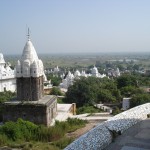 Sonagiri Jain Temple
Sonagiri Jain Temple
Sonagiri which literally means the golden peak, is a place sacred to Digambar Jains. This is a place where King Nanganag Kumar achieved liberation from the cycles of death and life along with his fifteen million followers.
Submit your review | |
